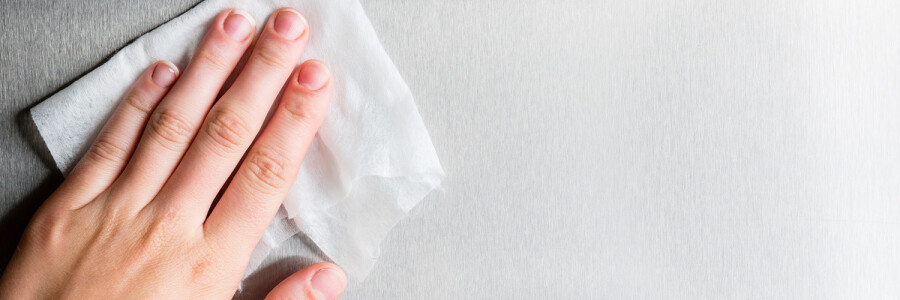Vernham Labels is a leading self-adhesive labels specialist in Andover and Hampshire and we offer a wide range of different types of labels – box labels, barcode labels, warehouse labels, labels for food and drink or specially customised labels.

To ensure optimal performance of your labels, Vernham Labels follows strict quality control procedures from storage through to printing. However, the method and conditions around application are just as key and surface preparation of the target substrate is a vital step in this process.
This blog gives you advice on how to get the best from your labels and how to clean and prepare the surface before applying them.
Labels should ideally be stored at room temperature (21°C) and 50% relative humidity. The materials we select are typically chosen to allow for a little variation, as it’s not always possible for all of our clients to hold their stock in environmentally controlled conditions. However, keeping labels at higher or lower temperatures may not provide the level of adhering performance you desire.
Surface Preparation for Labels
To achieve the best results, the label application surface should be dry and free of oil, dust and/or oxidized material. Depending on the surface you are applying your label to, surfaces may be cleaned with an all-purpose industrial cleaning or degreasing solution or an alcohol. Ensure to wipe dry before applying your specialist labels.
Smooth surfaces will always work best; however, we design labels for many different situations. Speak to our team before placing an order so that we can help with label quality management and the product label design.
Glass, smooth metals and certain plastics provide a good surface for permanent labels to stay put long term, or for the duration needed for removable labels. Textured or rough surfaces reduce the surface area available to the label to adhere to and so have reduced stick.
The label should be applied at room temperature; at lower temperatures the adhesive will be too firm to perform properly. Remove the liner from the label stock, being careful not to touch the adhesive with your fingers. Do not allow the adhesive to become contaminated with dust or dirt.
For smaller, more manageable labels, apply pressure to the surface by pressing firmly with your thumb, starting from one side of the label and moving across to the opposite side to expel any air bubbles that might have formed underneath. If you choose to use a roller, select the softest padding possible and do not use excessive pressure as this might cause the label to slip. Repeat the process two or three times to make sure that as much of the underside of the label and adhesive as possible is in strong contact with the surface of application.
Adhesives will meet maximum holding power after 72 hours and keeping the labels at the right temperature and environmental conditions during this time is key.
By taking these steps at the label application stage you will be creating the best conditions for optimal performance and durability over life. If you require support with label application or would like to discuss anything with our team, we are always on hand to help. Feel free to contact us and we will work with you to get the best results for your business needs.